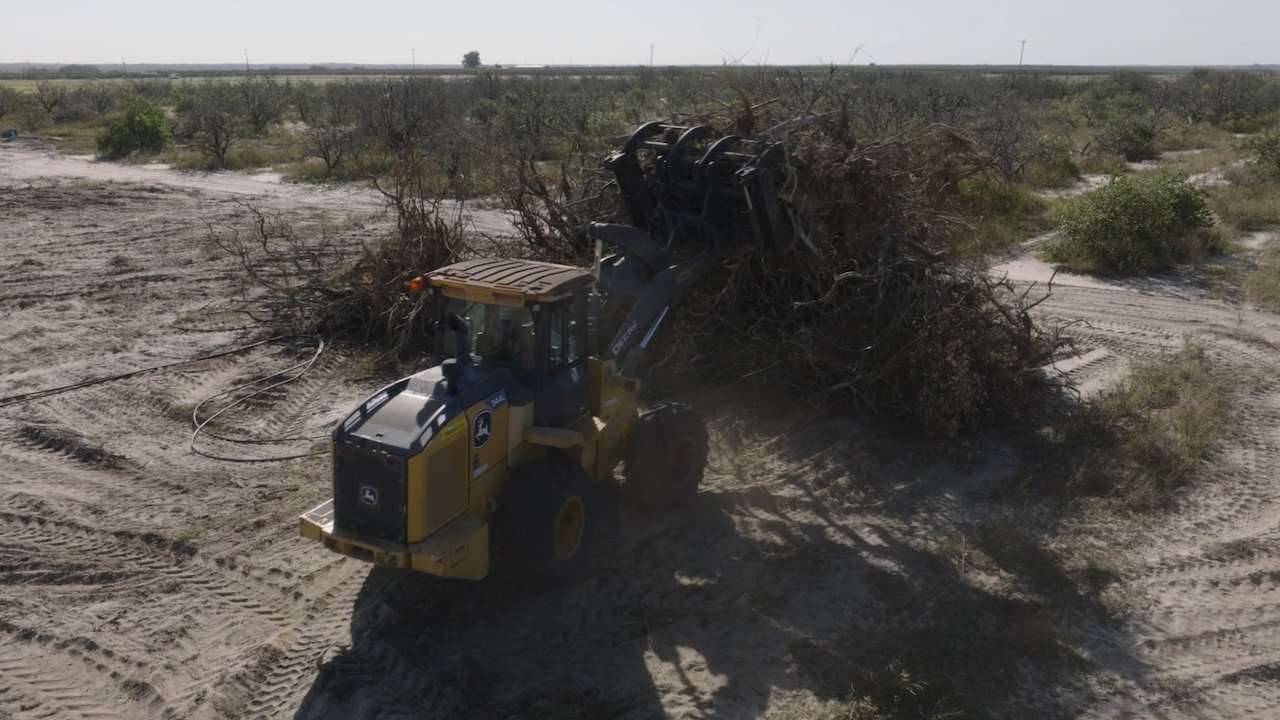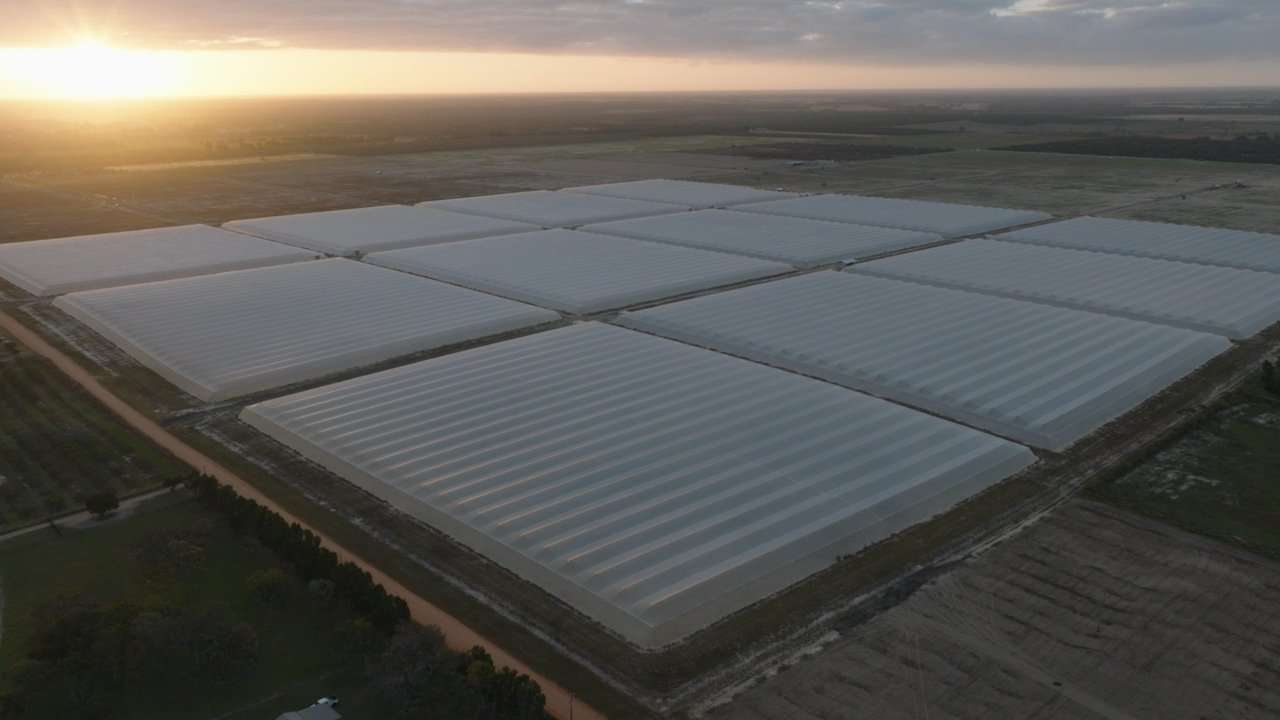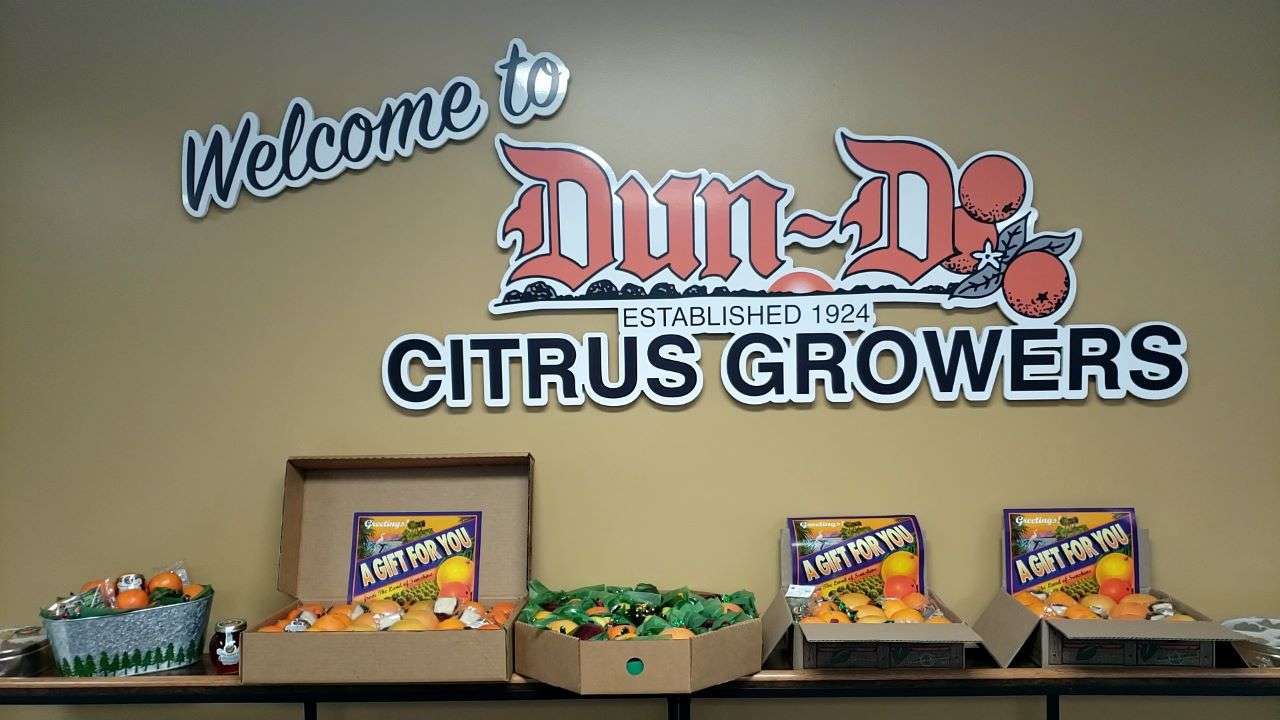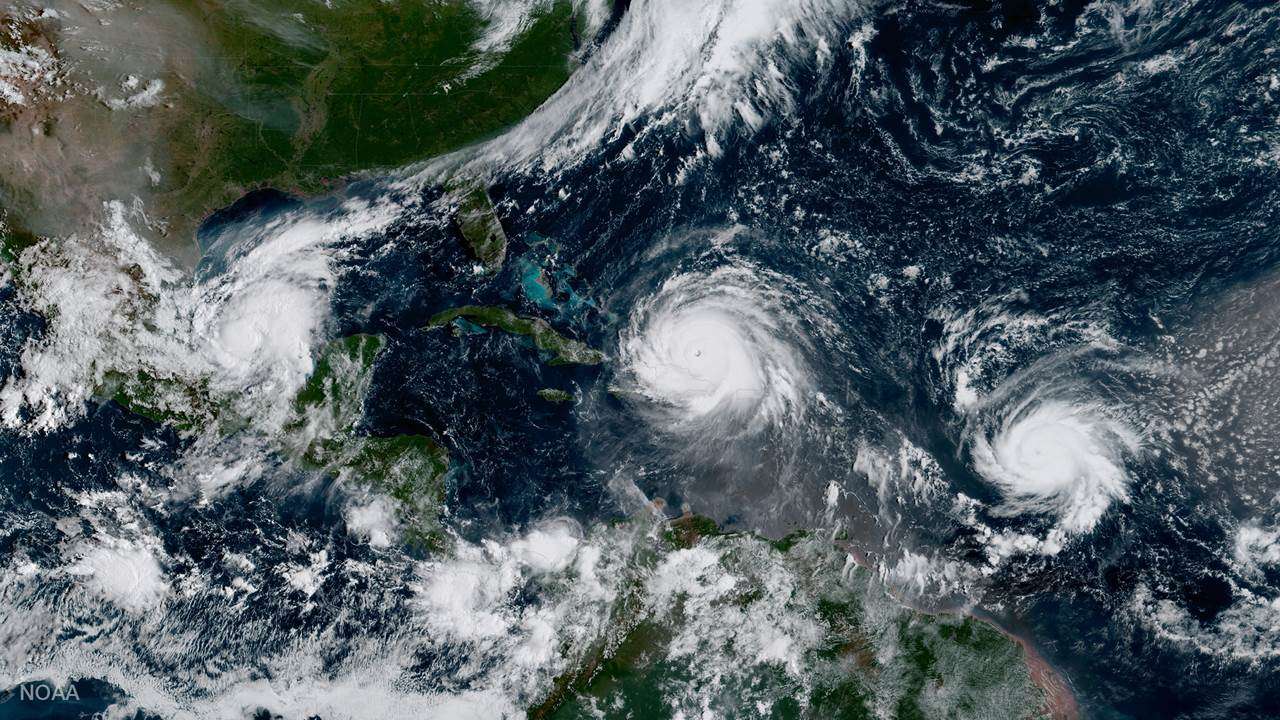Florida Citrus Growers Head Indoors To Survive
Growing Undercover One Approach To Beating Lethal Greening Disease
DUNDEE, FL — For many years, a well-known television commercial proclaimed, “A day without Florida orange juice is like a day without sunshine.”
The eve of that once-unthinkable day may be upon us.
A smoking pile of ash and rubble smolders slowly on a fall morning here, where just days before a legacy orange grove stood. The rumble of bulldozers and other heavy equipment hums from adjacent groves on their way to a similar fate. These are the latest victims of citrus greening disease, a lethal blight that’s cost The Sunshine State half its million acres of groves in the past two decades. There is no cure, there are few treatments, and the survival rate for infected groves is 0%.
Once greening infects a single tree, the rest of the grove has no chance of escaping. The disease is spread tree-to-tree by the tiny Asian citrus psyllid, a pest that has for decades been wiping out groves in production areas even bigger than Florida, like Brazil and China.
The difference is, in those countries, farmers just abandon the groves they have, commandeer other land from the rainforest or with government assistance, replant and continue apace, with new groves growing as old ones struggle through the process of dying. A similar approach in the U.S. is clearly unfeasible; there’s no free land here and little help for growers.
The above scene has been played and replayed countless times since the presence of the HLB bacteria – huanglongbing in full (which is why they just call it citrus greening) — was discovered here in 2005. At the time, no one knew it was the potential end of the road for Florida’s legacy crop.
That doesn’t mean Florida citrus growers will go down without a fight — all manner of ingenious methods are in use around the state to fight or circumvent greening. But at least as many as remain have either moved on to other crops or sold their land to voracious developers in the rapidly growing state. The citrus pandemic is literally reshaping the face of Florida.
The story of that fight comes to national television on this episode of Where The Food Comes From; fittingly titled A Day Without Sunshine.
The most promising of the efforts to fight greening is called CUPS – Citrus Under Protective Screen — and the vast sprawling structures are popping up everywhere in the middle of the state, looking for all the world like giant mesh circus tents. The CUPS effort – and investment – has been led by the team at Dundee Citrus Growers, a co-op whose juice is marketed under the Florida’s Natural brand.
Steve Callaham walks through the remains of groves that were in production when he was a child. But he’s not wistful, not distraught by the loss around him. Like most farmers, he’s pragmatic about the situation – and determined to find a solution.
“Citrus is too important to us – and to Florida – to give up,” says Callaham, CEO of the Dundee co-op. “It’s the most recognizable piece of our heritage. But it’s also still a very viable cash crop and we still believe there’s a future here.”
He’s not being hardheaded. At its peak of a million groves, the value of the citrus crop to the state of Florida was about $9 billion annually. After two decades of devastation, it’s still remarkably near $7 billion, though much of that is the result of inflation and rising prices for shrinking supply.
Dundee, like many other growers, has also branched out into other crops. The co-op is now a significant contributor to Florida’s booming blueberry business. They’re also one of a handful continuing to experiment with a peach designed to produce even in Florida’s sub-tropical climes.
But it’s citrus, the once – and possibly still future – king of Florida that’s front and center here.
That’s clear by the cost and maintenance commitment represented by the massive screened-in enclosures. While there are hundreds of thousands of acres of Florida citrus still outdoors, of course, the enclosed groves are markedly different both in appearance and production.
Modern outdoor Florida groves are almost uniformly twisted and deformed – gnarled sentinels staving off their own demise even as they continue to produce fruit. By contrast, the groves under cover are lush, uniform, and simply gorgeous. That once common feature of Florida’s state landscape – countless acres of beautiful, sprawling groveland — is unlikely to be seen again.
The screens keep out the tiny bug that spreads the infection. Despite the cost of construction and the constant threat from Florida weather, the results are worth it: Beautiful fruit and trees that produce twice as much as their outdoor counterparts.
There is another bonus. Almost all Florida citrus has historically gone to juice production, much less lucrative than fresh market fruit. That’s because the howling winds and shifting sands almost invariably lead to an outdoor product that’s scarred, ugly but delicious. Greening eventually makes a tree’s fruit even less attractive. Meanwhile, unblemished fruit from California – where growers have learned from Florida’s woes and managed to keep the pest out, so far – heads to supermarkets with a far better return for growers.
“We first visited Dundee in 2019 for the pilot episode of the show,” says Where The Food Comes From host and producer Chip Carter. “What we saw then was depressing, but promising, with just the first small structures surrounded by acres of ugliness. Four years later, the scene’s very different. And much more uplifting. Florida still has along way to go in this fight. But it’s clear they’ll keep fighting it.




